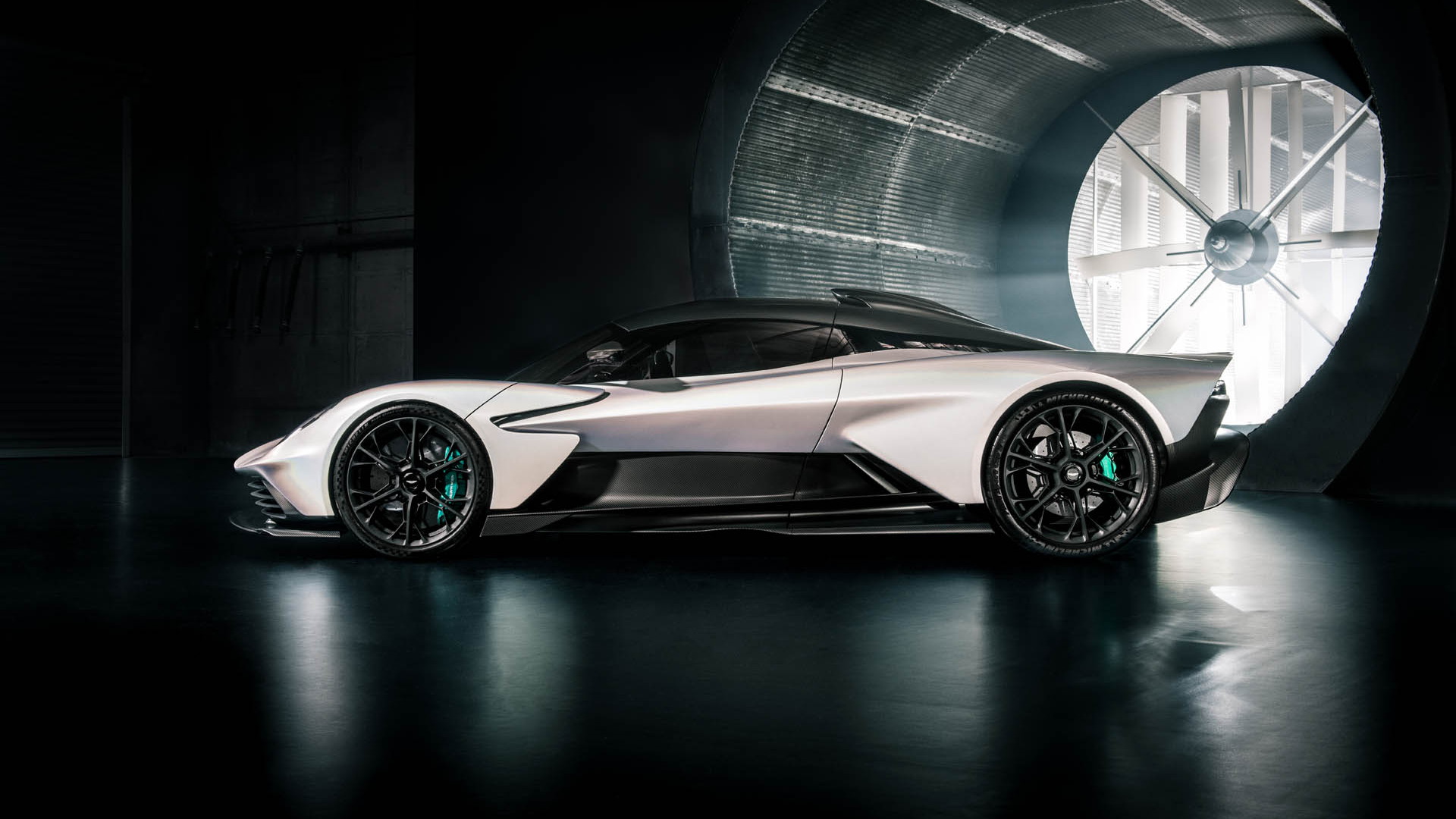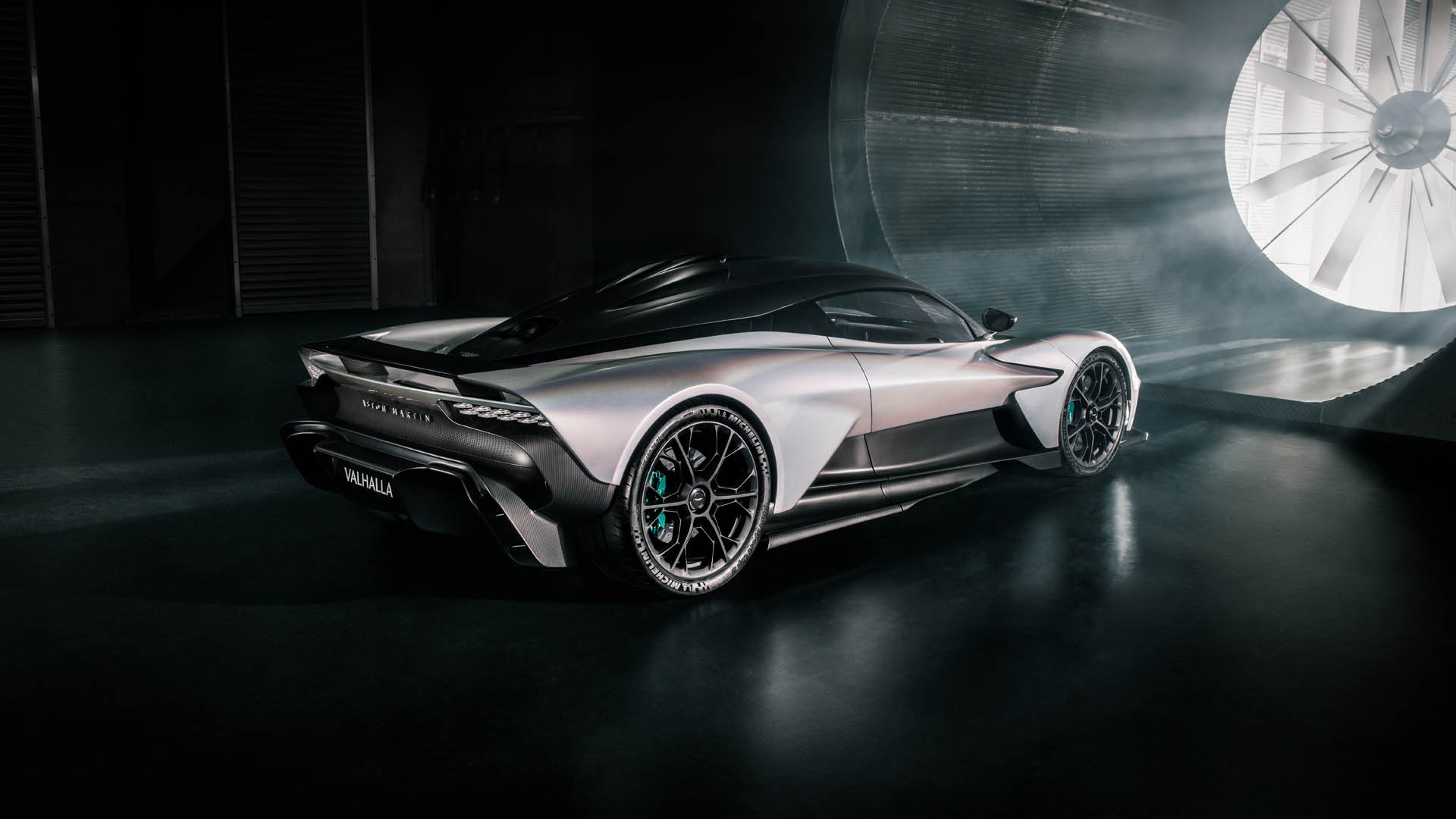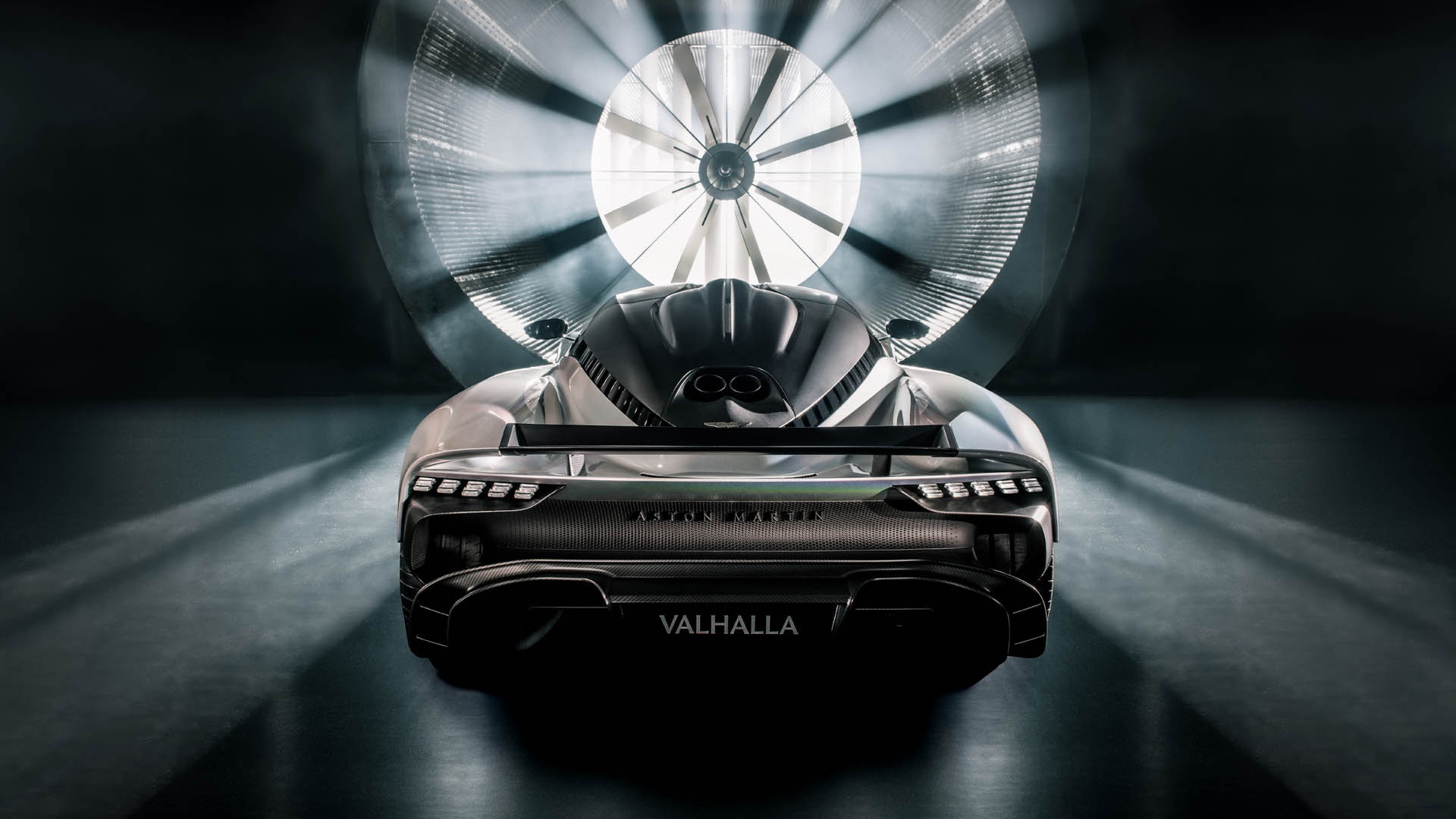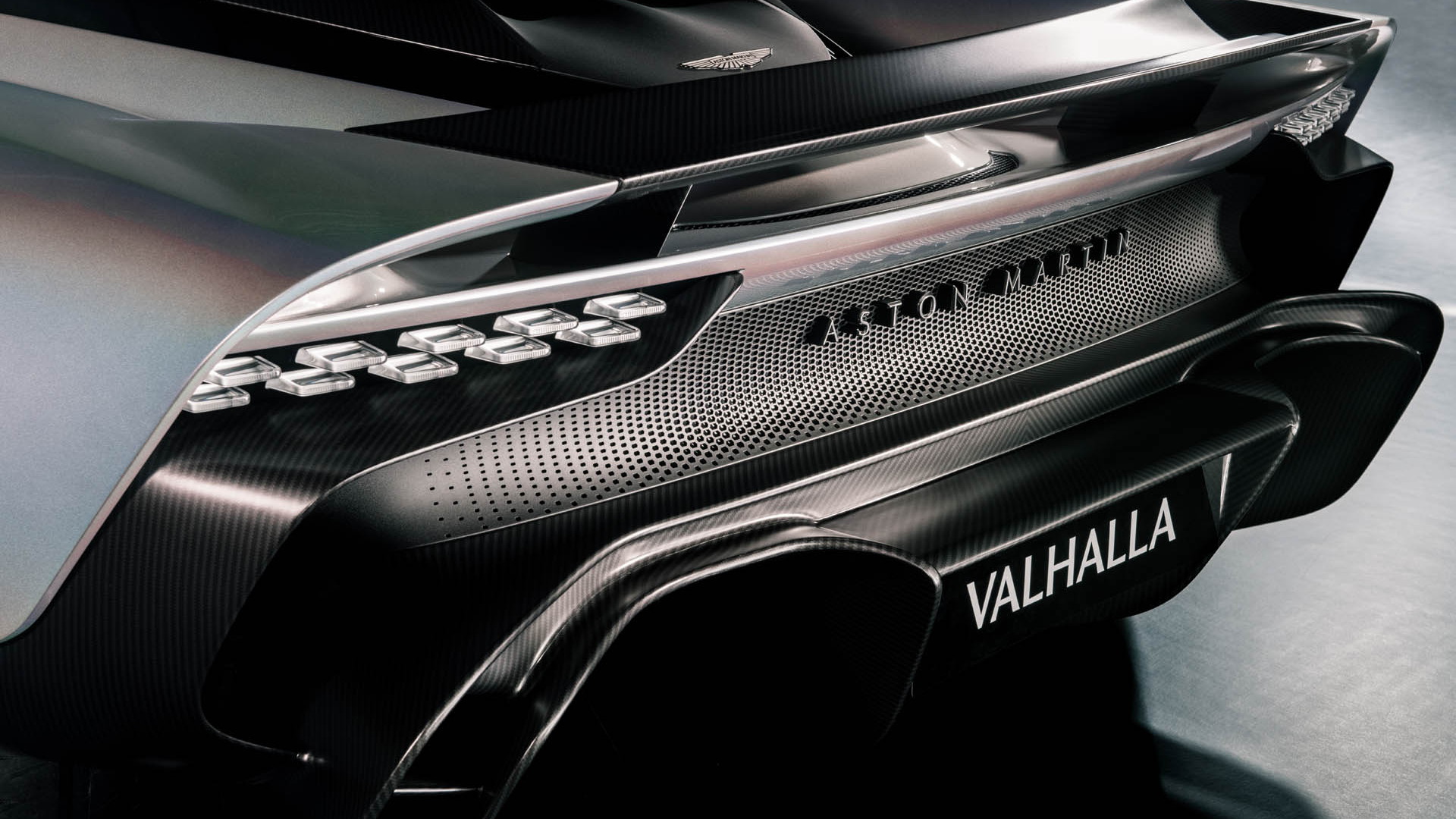Aston Martin's Valhalla supercar is on track to start production in 2024 as the company's first plug-in hybrid.
In a development update announced on Wednesday, Aston Martin said its Formula 1 team is closely involved with the project and that the first prototypes will be on the road later this year.
The involvement of the F1 team is via the team's consulting division, Aston Martin Performance Technologies (AMPT). Key areas where AMPT is helping is in the areas of aerodynamics, materials, and vehicle dynamics, Aston Martin said. The project is also benefiting from AMPT's rapid-development know-how.
A similar strategy was employed for the Valkyrie hypercar, albeit with Red Bull Racing, when Aston Martin was still a sponsor of the leading F1 team.
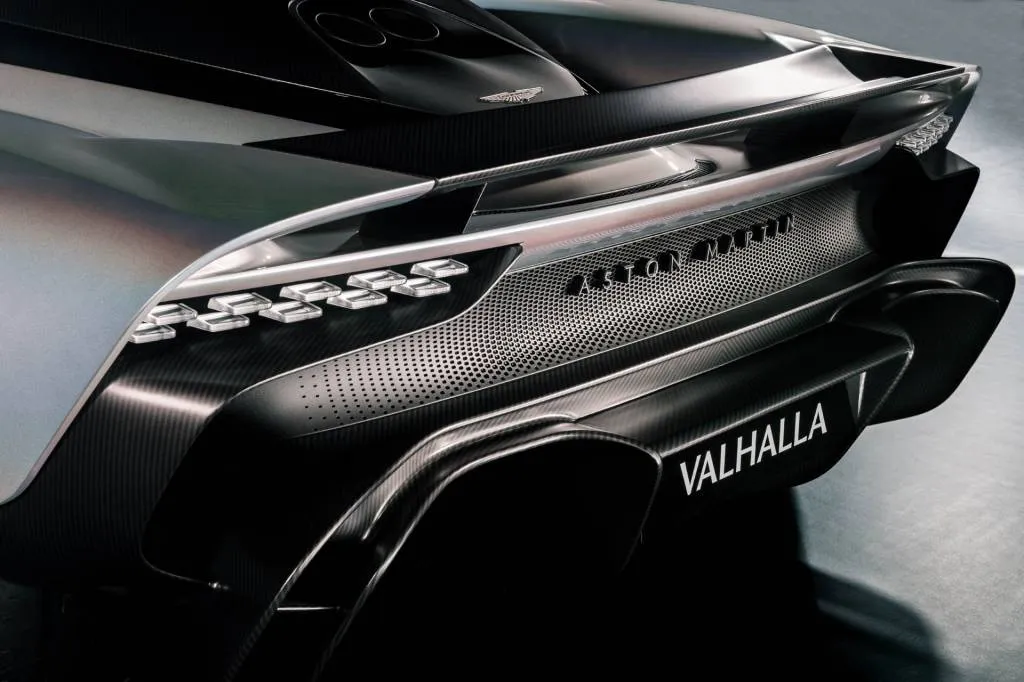
Aston Martin Valhalla
In the area of aerodynamics, the Valhalla's body has been shaped to generate high levels of downforce, including in areas you can't see, such as the vehicle floor or behind the front fascia where multi-element wings similar to an F1 race car can be found. Unlike F1, though, active elements have been deployed. An example are the front and rear wings which can lie flat to reduce drag or angled up to create downforce, just like the drag reduction system used on an F1 car's rear wing.
Aston Martin estimates the Valhalla will produce over 1,322 pounds of downforce at 149 mph, though the figure may improve as engineers are still refining the design in the wind tunnel, using the same software tools as the F1 team. The wind tunnel testing is crucial to determine the effects of yaw, roll and pitch, and ride height changes to the vehicle.
When it comes to materials, Aston Martin already has plenty of experience building cars from carbon fiber. However, AMPT was able to help in developing the Valhalla's carbon-fiber monocoque structure to maximize stiffness while minimizing weight. Aston Martin said a proprietary system was developed for the monocoque's construction that uses Resin-Transfer-Molding and F1-derived autoclave technology.
For vehicle dynamics, Aston Martin is using the same simulation tools the F1 team relies on. According to the automaker, around 90% of the Valhalla's dynamic properties are being honed with simulators, which reduces time required testing prototypes in the real world. Aston Martin said its F1 drivers, Fernando Alonso and Lance Stroll, have helped in this regard.
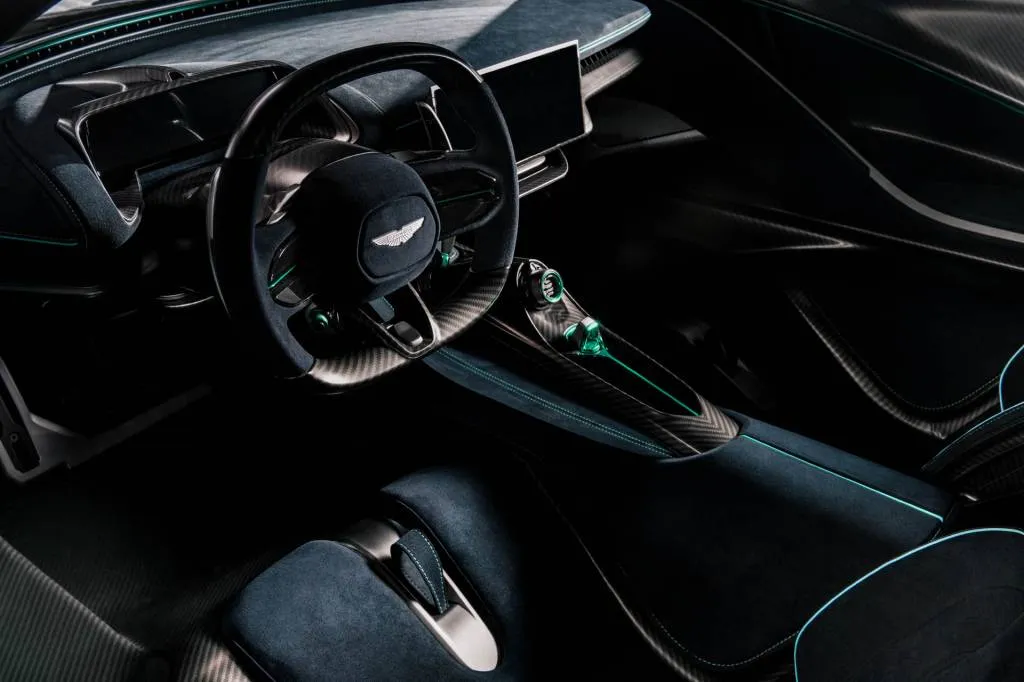
Aston Martin Valhalla
The F1 team has also provided consulting on ergonomics, like the seating position which will have the driver sitting with their feet raised up close to the hip line just like in an F1 car. This enables the designers to keep the cabin's roof low.
The Valhalla was first shown as a concept in 2019, originally with a newly developed V-6 serving as the internal-combustion component of the plug-in hybrid powertrain. However, Aston Martin scrapped plans for the V-6 following the onset of the pandemic, and switched to the proven twin-turbocharged 4.0-liter V-8 it sources from Mercedes-Benz and already uses in most of its models.
Performance targets have been increased from what Aston Martin previously announced. The company now plans to combine the V-8 with three electric motors, up from a previous two. There will be two motors at the front axle and a third motor integrated with the rear-mounted transmission, helping to form an all-wheel-drive system. The combined peak output for the Valhalla will be 998 hp, up from 937 hp previously.
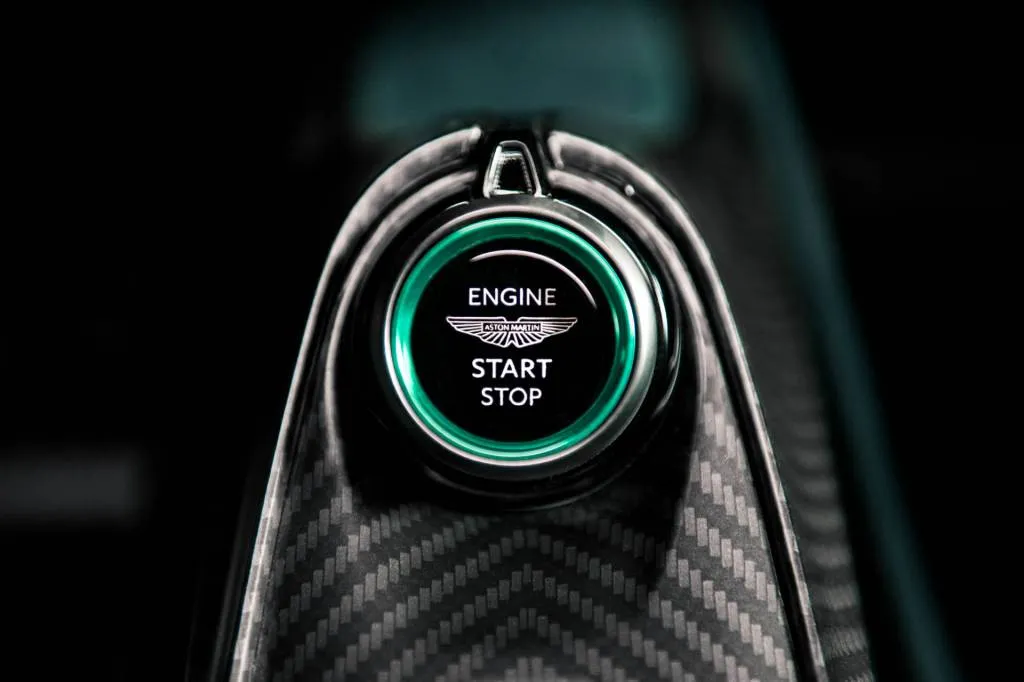
Aston Martin Valhalla
The two front motors will act independently, enabling fast and highly precise torque vectoring. They will also serve as the reverse function for the Valhalla, allowing engineers to drop the reverse gear of the transmission (thought to be an 8-speed dual-clutch automatic) and thus save some weight. The third motor will send drive to ther rear axle and also serve as the engine starter.
Production of the Valhalla will be limited to 999 examples. Additional examples may be planned, for example if Aston Martin launches an open-top version.


